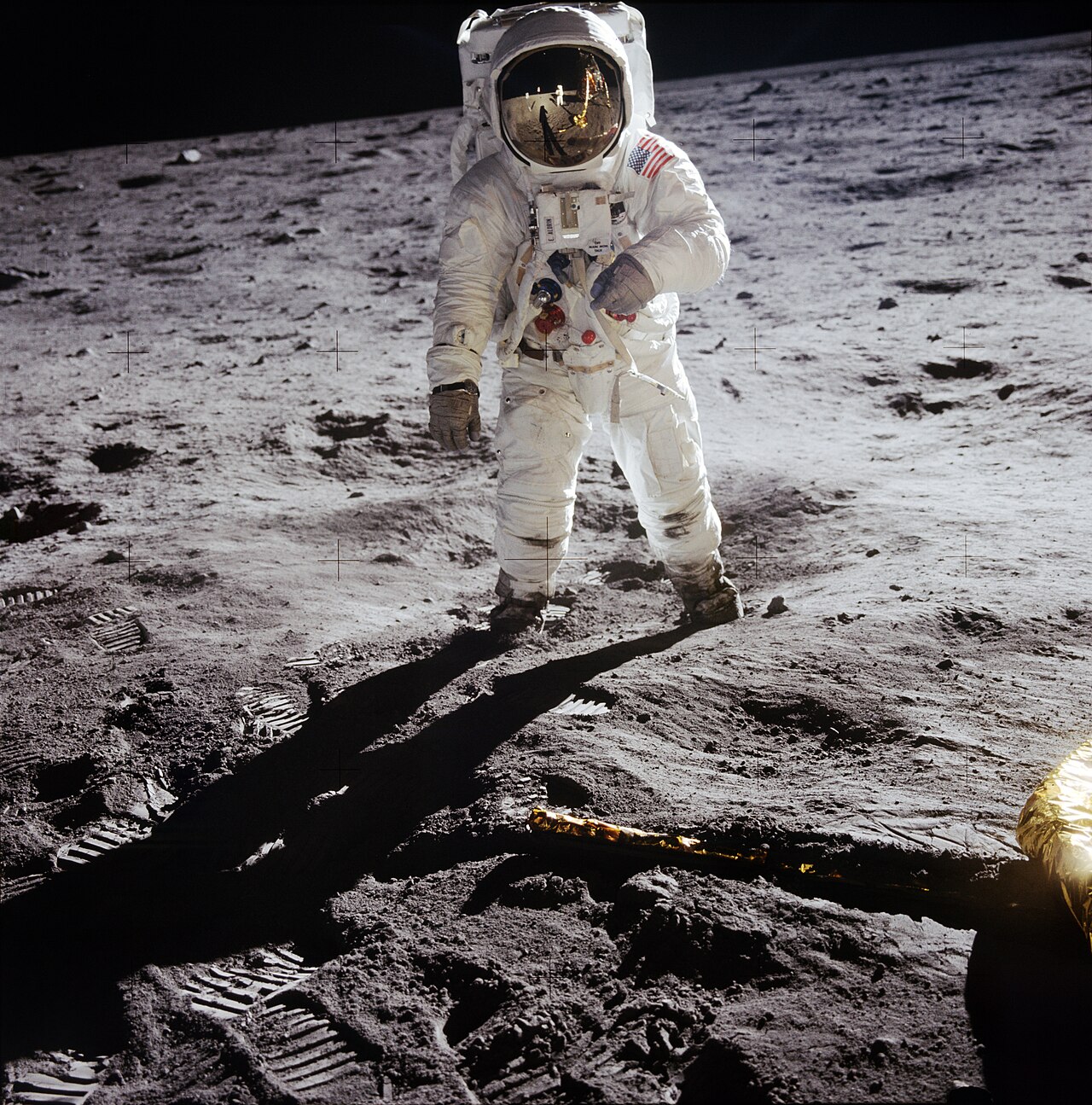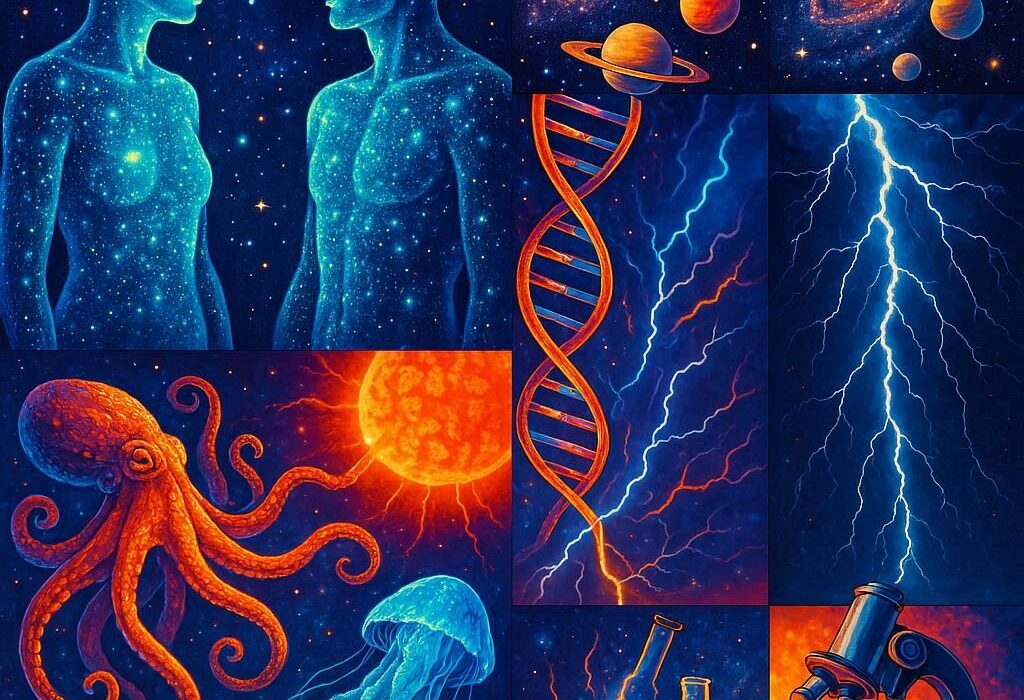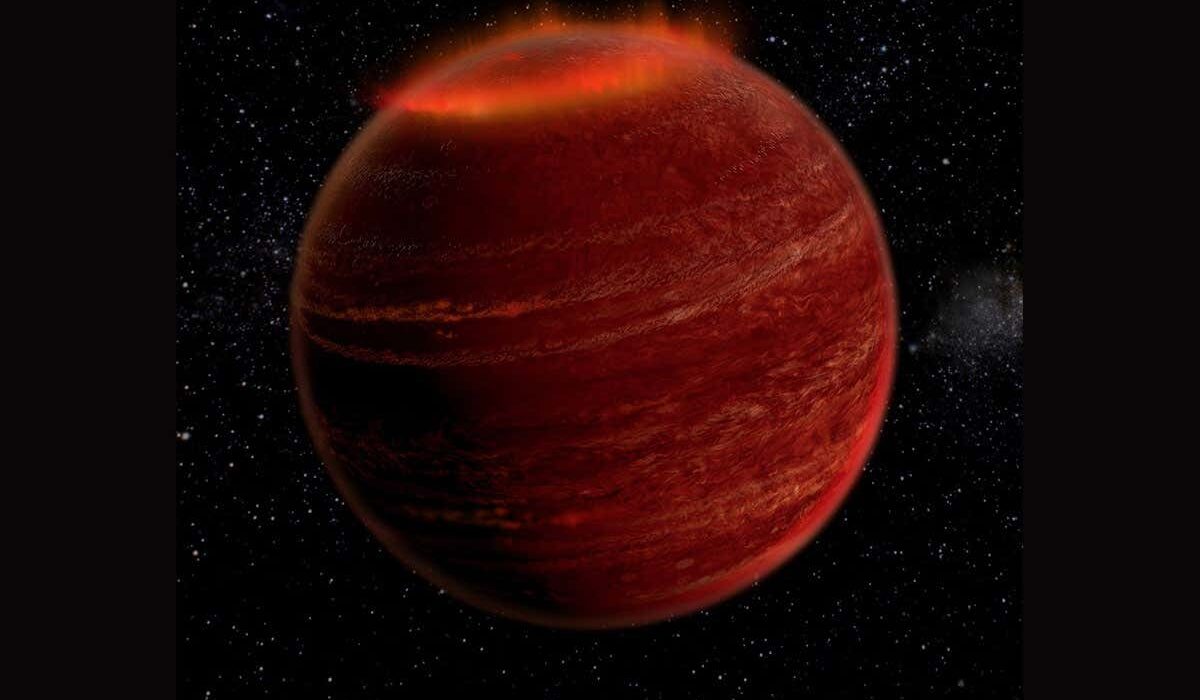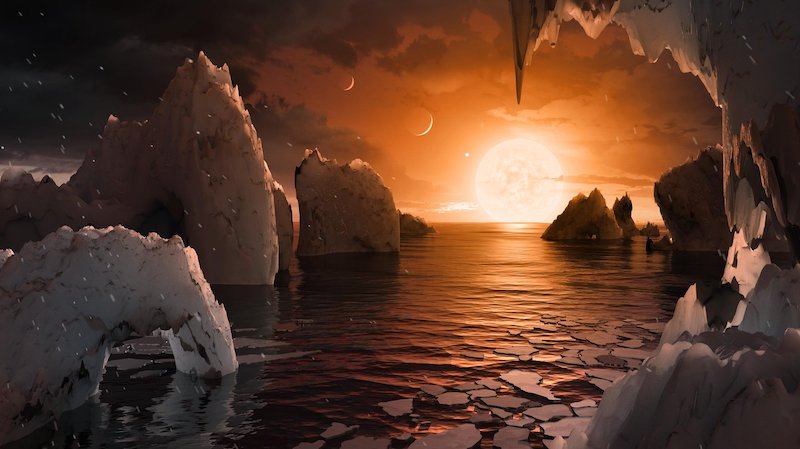From the moment our ancestors first gazed at the night sky, they have wondered what lies beyond. For thousands of years, the stars remained distant, untouchable, and mysterious. Then came the dawn of the Space Age—a revolution not only in technology but in imagination. The dreamers became engineers, the philosophers became scientists, and the impossible slowly began to unfold.
Every rocket launch, every probe, and every astronaut’s step into the void has brought us closer to understanding the cosmos and ourselves. Space missions are more than technological triumphs—they are milestones of human courage and curiosity.
Here are ten of the greatest space missions of all time—moments when humankind defied gravity, reached for infinity, and rewrote the story of existence itself.
1. Apollo 11 – Humanity’s First Steps on the Moon
On July 20, 1969, the world stood still. A human voice crackled through the static from a quarter-million miles away: “That’s one small step for man, one giant leap for mankind.”
Apollo 11 was more than a mission—it was a symbol of everything humanity could achieve when driven by vision and determination. Launched from Kennedy Space Center on July 16, 1969, the Saturn V rocket carried astronauts Neil Armstrong, Buzz Aldrin, and Michael Collins on a journey that would forever change history.
After four days in space, the lunar module Eagle separated from the command module Columbia and descended toward the desolate Sea of Tranquility. Armstrong took manual control, steering away from a crater field, and landed with just seconds of fuel to spare.
When Armstrong and Aldrin stepped onto the lunar surface, they became the first humans to set foot on another world. For two and a half hours, they explored, collected samples, and left behind a plaque reading, “We came in peace for all mankind.”
The success of Apollo 11 marked the height of the Space Race and fulfilled President Kennedy’s bold promise to land a man on the Moon before the decade’s end. But more than politics, it represented humanity’s collective will to explore—to reach out across the void and touch the unknown.
2. Voyager 1 and 2 – The Eternal Travelers
In 1977, NASA launched two robotic explorers that would go farther than any human-made object ever had before. Voyager 1 and Voyager 2 were twin spacecraft with a mission to study the outer planets—and perhaps to keep traveling indefinitely into the cosmos.
Voyager 1 flew past Jupiter in 1979 and Saturn in 1980, capturing breathtaking images and revealing mysteries like Jupiter’s swirling Great Red Spot and Saturn’s intricate ring system. Voyager 2, on a different trajectory, went on to explore Uranus and Neptune—the only spacecraft ever to visit those distant ice giants.
But their journey didn’t end there. Decades after launch, both Voyagers continued outward, carrying with them the Golden Record, a phonograph containing sounds and images of Earth—music by Bach and Chuck Berry, greetings in 55 languages, and a recording of human laughter.
In 2012, Voyager 1 crossed into interstellar space, becoming the first human-made object to leave the solar system. Voyager 2 followed in 2018. They still send faint signals home, whispering across the cosmic ocean, carrying humanity’s message of existence to the stars.
The Voyager mission redefined exploration. It taught us about the boundaries of our solar system, and more profoundly, it reminded us that even our smallest creations can journey eternally into infinity.
3. Hubble Space Telescope – The Eye That Changed the Universe
Launched aboard the Space Shuttle Discovery in 1990, the Hubble Space Telescope revolutionized astronomy. Floating 547 kilometers above Earth’s atmosphere, Hubble opened our eyes to a universe more vast and beautiful than anyone had ever imagined.
Before Hubble, Earth’s atmosphere blurred starlight and limited our view. Once in orbit, however, Hubble could observe the cosmos with crystal clarity—revealing galaxies billions of light-years away, star nurseries glowing with color, and the remnants of cosmic explosions.
One of Hubble’s most iconic achievements is the Hubble Deep Field—a long-exposure image that revealed thousands of previously unseen galaxies in what looked like an empty patch of sky. Each of those faint smudges represented billions of stars and untold possibilities.
Hubble also measured the expansion rate of the universe, helped estimate its age, and deepened our understanding of black holes, dark energy, and exoplanets.
What makes Hubble even more remarkable is its longevity. Despite early technical issues that blurred its first images, astronauts aboard the Space Shuttle repaired and upgraded the telescope multiple times, turning it into one of the most productive scientific instruments in history.
For over three decades, Hubble has been humanity’s cosmic window—a testament to perseverance, teamwork, and the insatiable desire to see farther.
4. Mars Rover Curiosity – The Explorer of the Red Planet
In August 2012, after a breathtaking “seven minutes of terror” descent, NASA’s Curiosity rover safely landed on Mars. Its mission: to determine if Mars ever had conditions suitable for life.
Curiosity was not just another robot—it was a rolling laboratory. Equipped with a laser spectrometer, cameras, drills, and sensors, it began exploring Gale Crater, analyzing rocks and soil for signs of ancient water.
Soon, it made stunning discoveries: evidence of streambeds, organic molecules, and clay minerals—all pointing to a time when Mars was warm, wet, and potentially habitable.
Curiosity’s images painted a vivid picture of an alien yet familiar world. Martian sunsets tinted blue, mountains loomed in the distance, and dust devils danced across the plains. Each day, it sent back postcards from another planet, igniting imagination across Earth.
Its mission has lasted years longer than planned, and its findings have shaped the goals of future Mars missions—including human exploration. Curiosity proved that Mars was once alive in a geochemical sense, and maybe, just maybe, it could be again.
5. International Space Station (ISS) – Humanity’s Home in the Sky
Orbiting 400 kilometers above Earth, the International Space Station is one of the greatest achievements of human collaboration. Built piece by piece starting in 1998, the ISS is a joint effort between NASA, Roscosmos, ESA, JAXA, and CSA—uniting nations once divided by politics under a shared mission of discovery.
The ISS isn’t just a spacecraft—it’s a living laboratory where astronauts conduct experiments in biology, physics, medicine, and materials science in microgravity. These studies have advanced our understanding of bone loss, immune systems, and even potential cancer treatments.
It’s also a home. Astronauts live aboard for months at a time, orbiting Earth every 90 minutes, witnessing 16 sunrises and sunsets a day. From the Cupola window, they watch thunderstorms flash, auroras shimmer, and continents drift by in silence.
The ISS stands as a symbol of what humanity can accomplish together. It has hosted astronauts from more than 20 countries and served as a testbed for technologies that will take us to the Moon and Mars.
In a divided world, the ISS remains a beacon of unity—a shared home above the clouds, proving that exploration knows no borders.
6. Cassini-Huygens – The Mission to Saturn’s Realm
Launched in 1997, the Cassini-Huygens mission was one of the most ambitious interplanetary projects ever undertaken. A joint venture between NASA, ESA, and the Italian Space Agency, it set out to explore Saturn and its mysterious moons.
After a seven-year journey, Cassini entered orbit around Saturn in 2004, becoming the first spacecraft to do so. For the next 13 years, it transformed our understanding of the ringed planet.
Cassini revealed the complex beauty of Saturn’s rings—vast structures made of ice and rock—and discovered that the small moon Enceladus was spewing plumes of water vapor from its icy surface. These geysers hinted at a subsurface ocean that could potentially harbor life.
The Huygens probe, which detached from Cassini, landed on Titan, Saturn’s largest moon, in 2005—the first landing on an outer solar system body. It revealed a landscape of lakes and rivers made of liquid methane and ethane, under a thick orange atmosphere.
When Cassini’s mission ended in 2017, it plunged heroically into Saturn’s atmosphere to avoid contaminating potentially habitable moons. Its “Grand Finale” was poetic—an intentional dive into the planet it loved, becoming part of the world it had studied.
Cassini-Huygens gave us Saturn’s secrets and taught us how to explore with beauty, precision, and respect for the unknown.
7. SpaceX Falcon 9 and Dragon – The Dawn of the New Space Age
For decades, space exploration was dominated by national agencies. Then came SpaceX, a private company founded by Elon Musk, with a bold mission: to make space travel reusable, affordable, and accessible.
The launch of the Falcon 9 rocket and Dragon capsule marked a revolution in spaceflight. In 2015, SpaceX achieved what was once thought impossible—landing a rocket booster vertically after launch, ready to be reused. This breakthrough slashed costs and redefined how humanity could travel to space.
In 2020, SpaceX’s Crew Dragon carried astronauts Doug Hurley and Bob Behnken to the International Space Station—the first crewed launch from U.S. soil since the Space Shuttle era. It was also the first time a private company had flown humans into orbit.
Beyond the ISS, SpaceX is developing Starship—a fully reusable spacecraft designed for interplanetary travel. Its goal: to take humans to Mars.
Falcon 9 and Dragon didn’t just launch payloads—they launched a new era. They proved that space belongs not just to governments but to humanity as a whole, paving the way for the next generation of explorers.
8. James Webb Space Telescope – The Cosmic Time Machine
Launched on December 25, 2021, the James Webb Space Telescope (JWST) is humanity’s most powerful window into the universe. Designed to see farther back in time than any instrument before it, Webb observes the cosmos in infrared, allowing it to peer through dust clouds and glimpse the birth of stars and galaxies.
Stationed at the L2 Lagrange point, 1.5 million kilometers from Earth, Webb unfolded itself in space—a delicate ballet of mirrors, sunshields, and precision engineering. Once operational, it began returning images that stunned the world.
Its first deep-field image revealed thousands of galaxies, some from just a few hundred million years after the Big Bang. Webb has also studied exoplanet atmospheres, identifying water, methane, and carbon dioxide—molecules essential for life.
Where Hubble showed us the beauty of the universe, Webb reveals its origins. It can detect light that has traveled over 13 billion years, effectively letting us look back to the dawn of time.
JWST represents humanity’s most ambitious scientific dream: to understand where we came from, and perhaps, to find out if we are alone.
9. Sputnik 1 – The Beep That Started It All
On October 4, 1957, a metallic sphere no bigger than a beach ball changed the world forever. The Soviet Union’s Sputnik 1 became the first artificial satellite to orbit Earth, marking the beginning of the Space Age.
It was a simple machine—58 centimeters wide, weighing just 83 kilograms—but its impact was enormous. As Sputnik orbited the planet, it transmitted a steady radio “beep… beep… beep…” heard by amateur operators around the globe.
Those beeps sent shockwaves through society. They proved that humanity could reach beyond Earth, but also sparked a fierce competition between the U.S. and the Soviet Union—the Space Race.
Sputnik 1 led directly to the creation of NASA, the Apollo program, and the entire infrastructure of modern space exploration.
In many ways, Sputnik’s simplicity was its genius. It was the sound of a new era beginning—the moment when humanity realized the stars were within reach.
10. Perseverance and Ingenuity – The Pioneers of a New Mars
When NASA’s Perseverance rover touched down on Mars in February 2021, it carried not only scientific instruments but a helicopter named Ingenuity—a small, experimental flyer designed to prove that powered flight was possible on another planet.
Perseverance’s mission built upon the legacy of Curiosity, searching for signs of ancient microbial life and collecting rock samples for future return to Earth. It explored the Jezero Crater, an ancient river delta that once held liquid water.
But Ingenuity stole the spotlight. In April 2021, it achieved the first powered flight on another world—a short, graceful hop that forever changed space history.
Since then, Ingenuity has flown dozens of times, scouting terrain and guiding Perseverance. Together, they represent the next step in exploration—a partnership of machine intelligence and mechanical wings, born of human creativity.
The mission’s success is more than scientific; it’s emotional. It’s the story of persistence, courage, and hope—traits as essential to exploration as fuel and steel. Perseverance and Ingenuity are proof that the human spirit can fly even where the air is too thin.
The Legacy of Exploration
From the grainy images of Sputnik to the golden glow of JWST, these missions share one thing: the unquenchable human desire to explore. Each rocket, rover, and satellite is a reflection of who we are—a species that dreams, questions, and dares.
Space exploration is not just about technology; it’s about identity. It’s about understanding our origins, our place in the cosmos, and our potential future among the stars.
We are explorers by nature. And as long as there are worlds to discover, the story of space missions will continue—a saga of courage, imagination, and wonder written across the universe itself.






